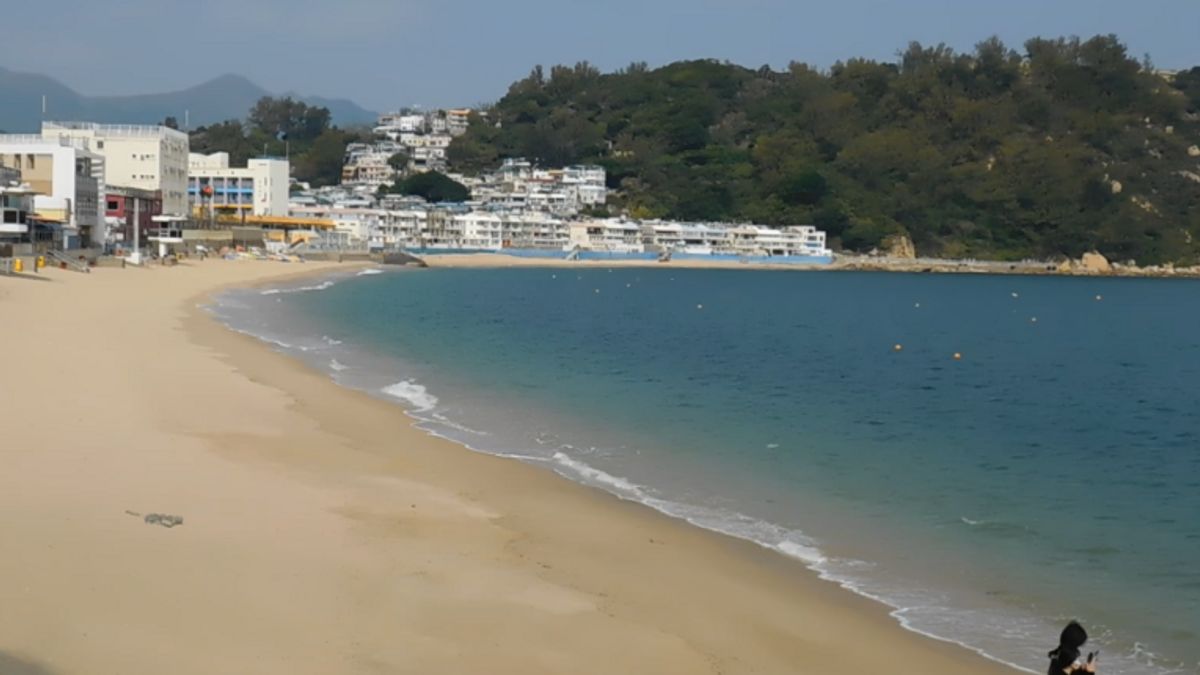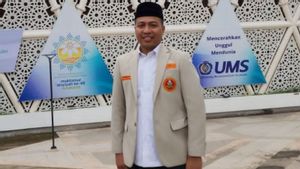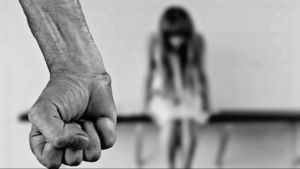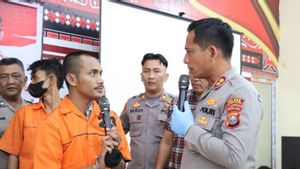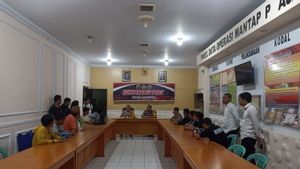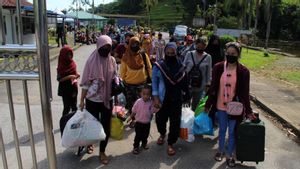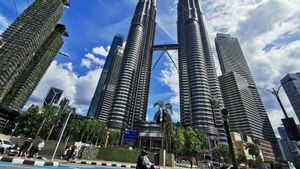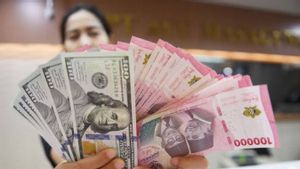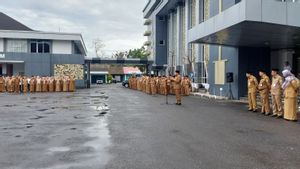JAKARTA - Hong Kong does not only offer city tours including shopping locations for various well-known label products, but also natural views in the form of beaches and rows of granite stones arranged like the Mini Great Wall at Cheng Chau.
Hong Kong tour guide, Carolus Chui, said Cheng Chau is the first choice for tourists from the city and generally they visit on Saturdays and Sundays, or during holidays.
For those who want quiet, Monday to Friday is the best choice. However, at that time most of the shops in Cheng Chau were closed because the shop's opening hours were mostly on Saturdays and Sundays, when tourists visit crowded.
Launching Antara, to get to Cheng Chau, travelers can use a ferry from the fifth door of Central Pier which can be accessed from the Mass Transit Railway (MTR) Hong Kong Station.
There are two types of ferries namely fast and regular with a difference of about 15 minutes of travel time. The fast ferry ride will take 30 minutes, while the regular ferry is around 45 minutes.
Ferry tickets vary by day of arrival, age, and type of ship. Regular ferries Monday to Saturday cost 13.40 Hong Kong Dollars (HKD) for adults and 6.70 HKD for seniors, children aged three to 12 years, and persons with disabilities.
On Sundays and holidays, the fee is HKD 20 for adults and HKD 10 for the elderly, children, and people with disabilities.
Meanwhile, fast ferry tickets cost HKD 26.20 for adults and HKD 13.10 for the elderly, children, and persons with disabilities. On Sundays and holidays, the ferry fee is HKD 38 for adults to HKD 19 for seniors, children, and the disabled.

Things to enjoy
Cheng Chau, which can be interpreted as a long peninsula, has an area of about three square kilometers. When viewed from the map, this island looks like the shape of a dog image.
Here are available beach tours and other tourist locations that can be reached on foot from the harbor pier. There are two suggested routes, namely the Central Island Route which takes one hour, and the Central & Southern Route which takes around 150 minutes.
The sandy beaches at Cheng Chau, namely Tung Wan Beach and Kwun Yam Beach, have clear turquoise water, a few meters from the pier.
Travelers can swim at these beaches. If you pay close attention, at several points there are some kind of orange balls with a net underneath. This serves to keep tourists from swimming too far. According to Carolus, this net is used to hold back sharks coming from the South China Sea.
Not far from the beach, there is a hiking trail several tens of meters up to the Mini Great Wall. The name Mini Great Wall is pinned because the rows of granite stones are arranged to look like the Great Wall of China.
The Mini Great Wall is located behind Kwun Yam Beach and at Cape Chi Ma Hang which is southeast of Cheng Chau. The total length of the walking route to explore this location is around 850 meters and takes about 20 minutes from the entrance.
Apart from the beach, there are temples such as the Pak Tai Temple which is about a five-minute walk from the Cheung Chau Ferry Pier. Pak Tai Temple was founded in the 18th century by local fishermen to honor the God of the Sea according to Taoist beliefs.
This is where the Cheung Chau Jiao Festival, also known as the Cheung Chau Bun Festival, is held every April or May, according to the Chinese calendar.
Cheng Chau Bun Festival usually attracts tens of thousands of local and foreign tourists every year. This festival is staged to mark the eighth day of the fourth month in the Chinese calendar (usually in early May), to coincide with the celebration of the birth of Buddha.
One popular activity during the festival is climbing a tower of steel buns by specially trained and selected people.
"Cheng Chau has a busier population. There are many temples as places of worship. Every year there are several festivals, one of which is the Bakpao Festival. (Certain people during the festival) climb mountains of buns, those who (get buns) get the most fortune," said Carolus.
Talking about the best time to visit Cheng Chau, this depends on the destination of the tourist. Those who want peace then Monday to Friday is the most recommended choice of guides.
Meanwhile, for those who want to try out all the shops on the island and like crowds with other tourists, Saturday and Sunday are the best time.
Especially for those visiting Cheng Chau in February, it's best to bring warm clothes because it's still winter with an average temperature of 12 degrees Celsius to 20 degrees Celsius. In the morning, for example, the temperature can reach 17 degrees Celsius or even 12 degrees Celsius. On Wednesday (16/2), for example, the temperature during the day reached 17-19 degrees Celsius with windy conditions and the sun was shining.
Carolus said, most tourists come without staying overnight on the island, aka going home and leaving on the same day. Meanwhile, for those who want to stay, there are hotels and villas that can be an option.
When it comes to food, the restaurants in Cheng Chau offer a variety of seafood dishes and hockey buns with sweet fillings sold in a bakery that is more than 30 years old. Currently, the shop is managed by Martin Kwok, who is the second generation of the family business.
The white buns being sold have the red Chinese character "Ping On" stamped on them which means safety. It is said that bubonic plague once plagued Cheung Chau more than a century ago during the Qing dynasty (1644-1911). To appease the anger of the gods and spirits, buns were made as offerings.
VOIR éGALEMENT:
For travelers who want to shop for souvenirs from Cheng Chau, souvenirs in the form of magnets, bracelets to key chains with the bakpao logo might be an option. Dried seafood snacks can also be considered.
Hong Kong is now open again for foreign tourists including Indonesia and the special administrative area of China can be entered without COVID-19 restrictions.
In general, there are at least two things that tourists need to prepare before visiting Hong Kong during a pandemic like today, namely rapid antigen test results (with negative results) within 24 hours before the scheduled flight departure time.
The second thing is travel insurance which covers COVID-19 protection. Meanwhile, there is no required vaccination requirement.
The English, Chinese, Japanese, Arabic, and French versions are automatically generated by the AI. So there may still be inaccuracies in translating, please always see Indonesian as our main language. (system supported by DigitalSiber.id)
